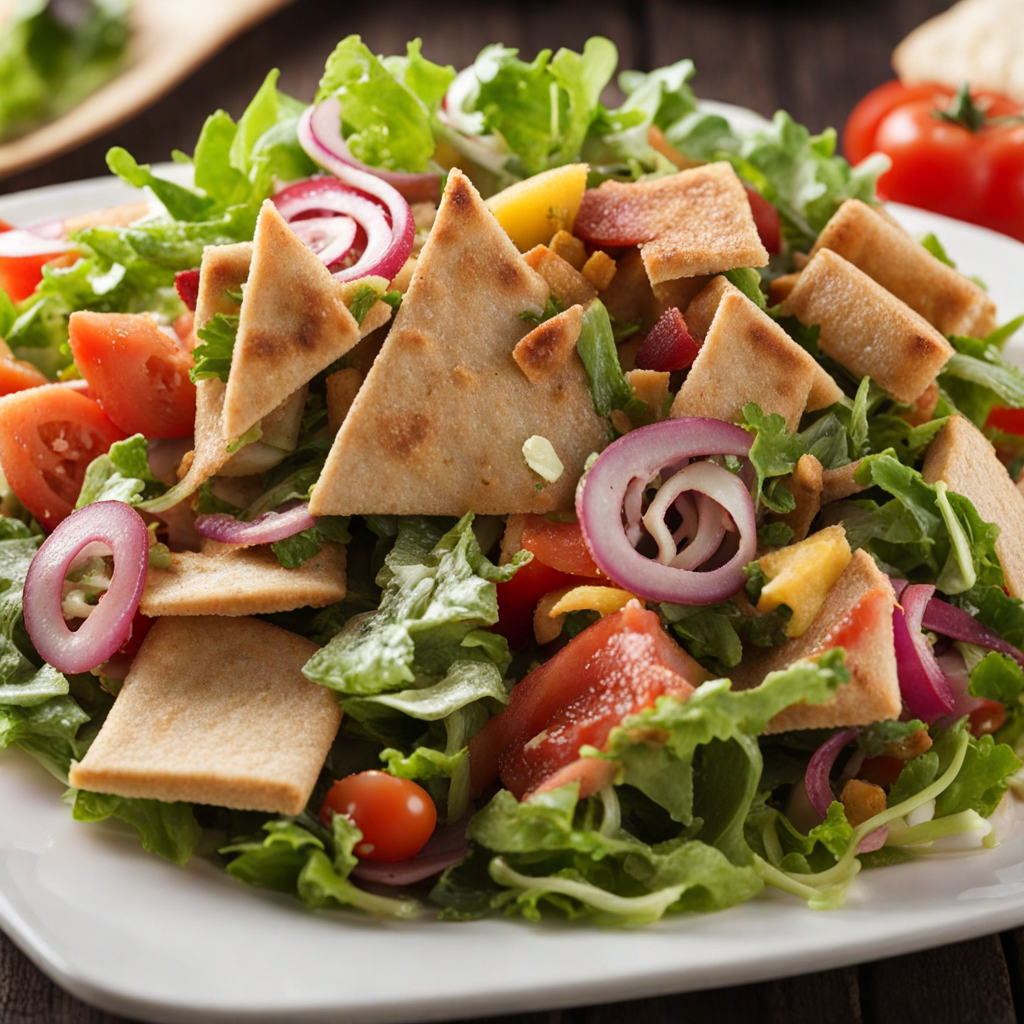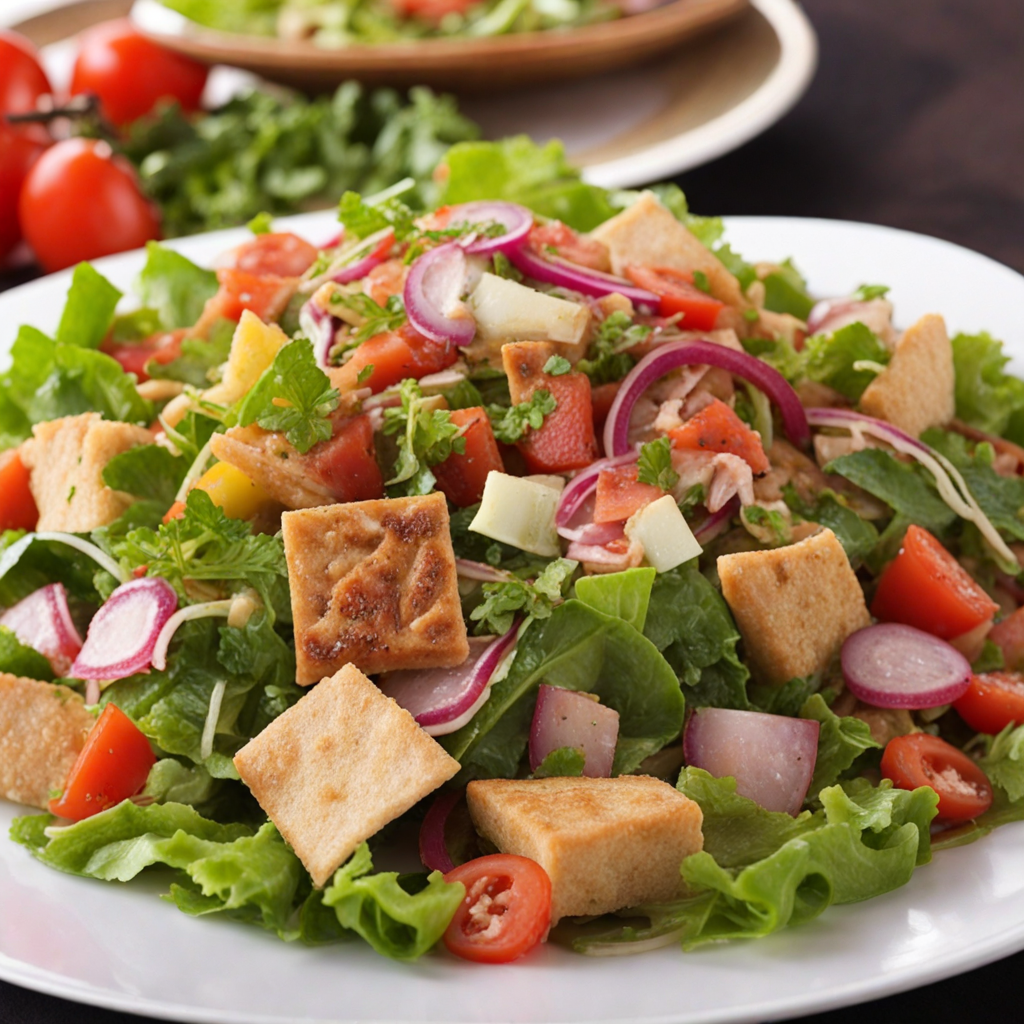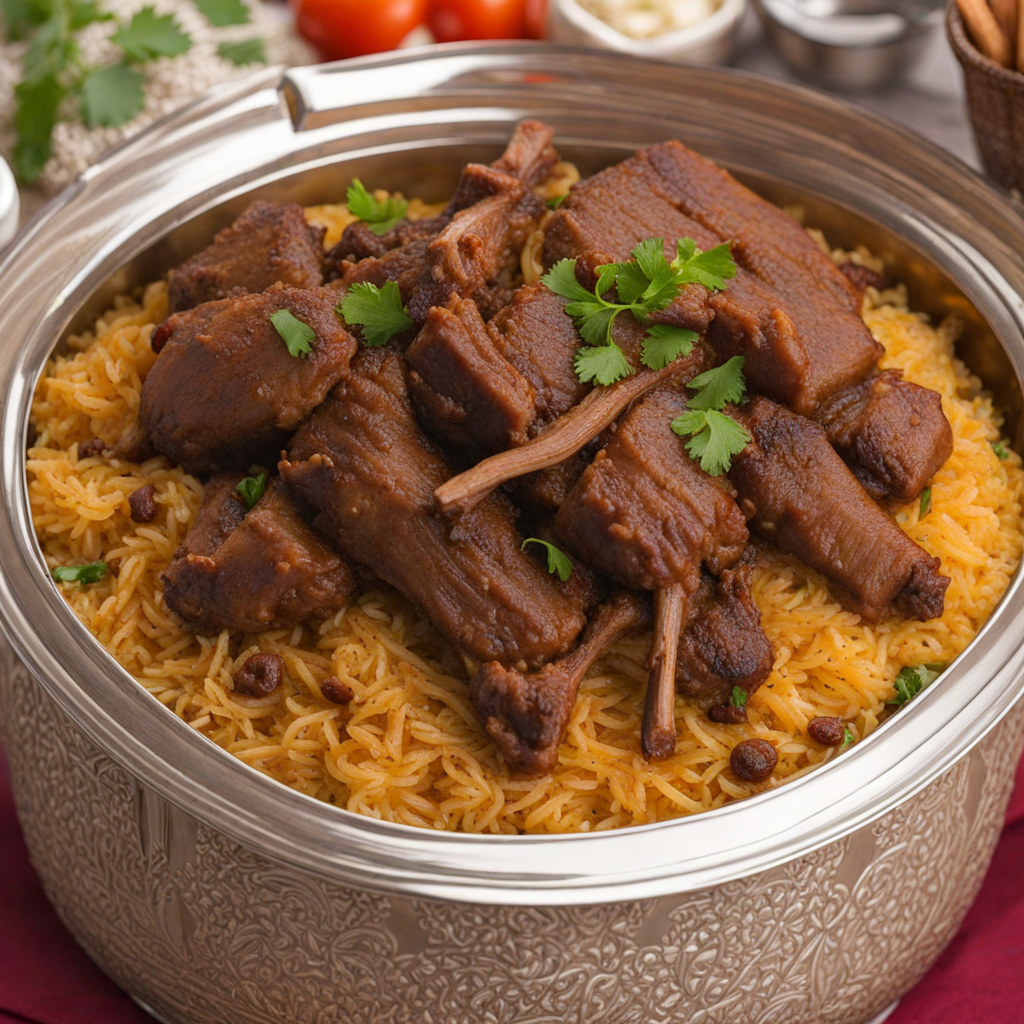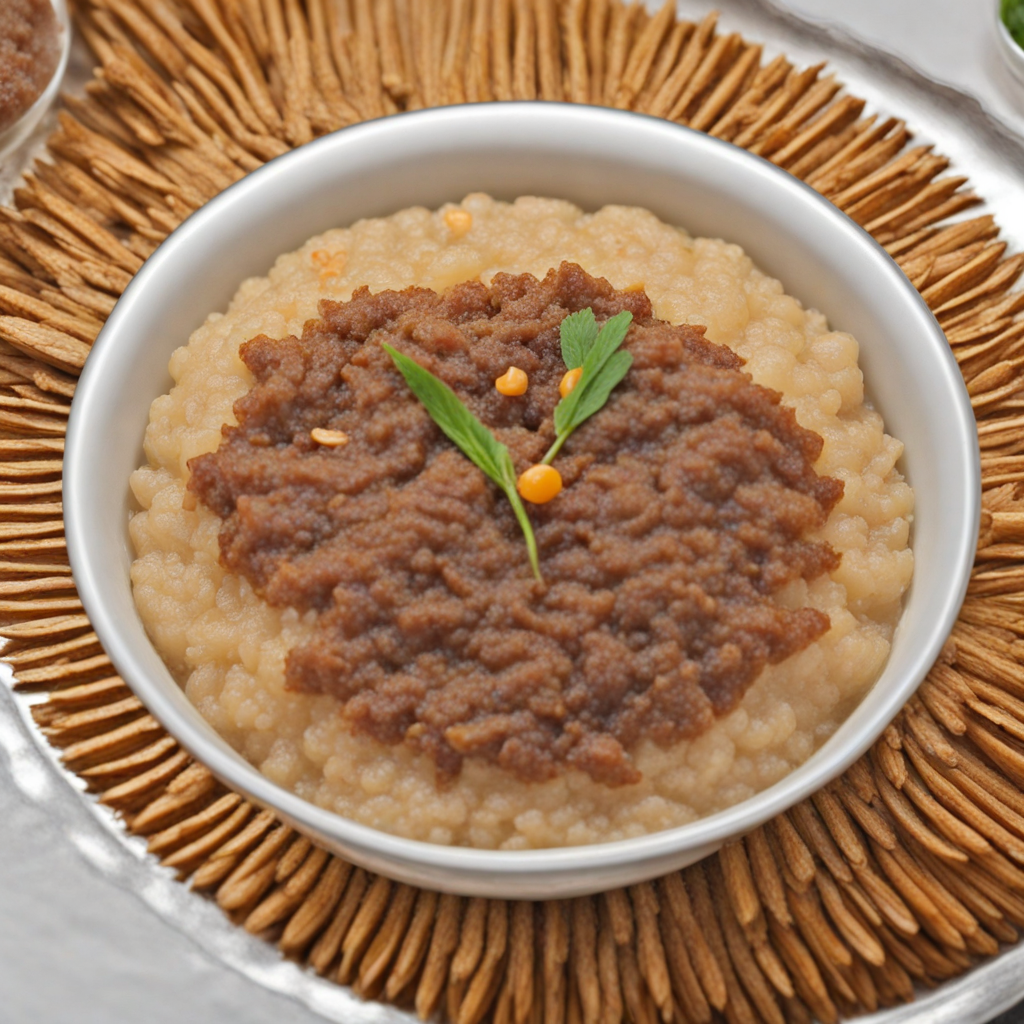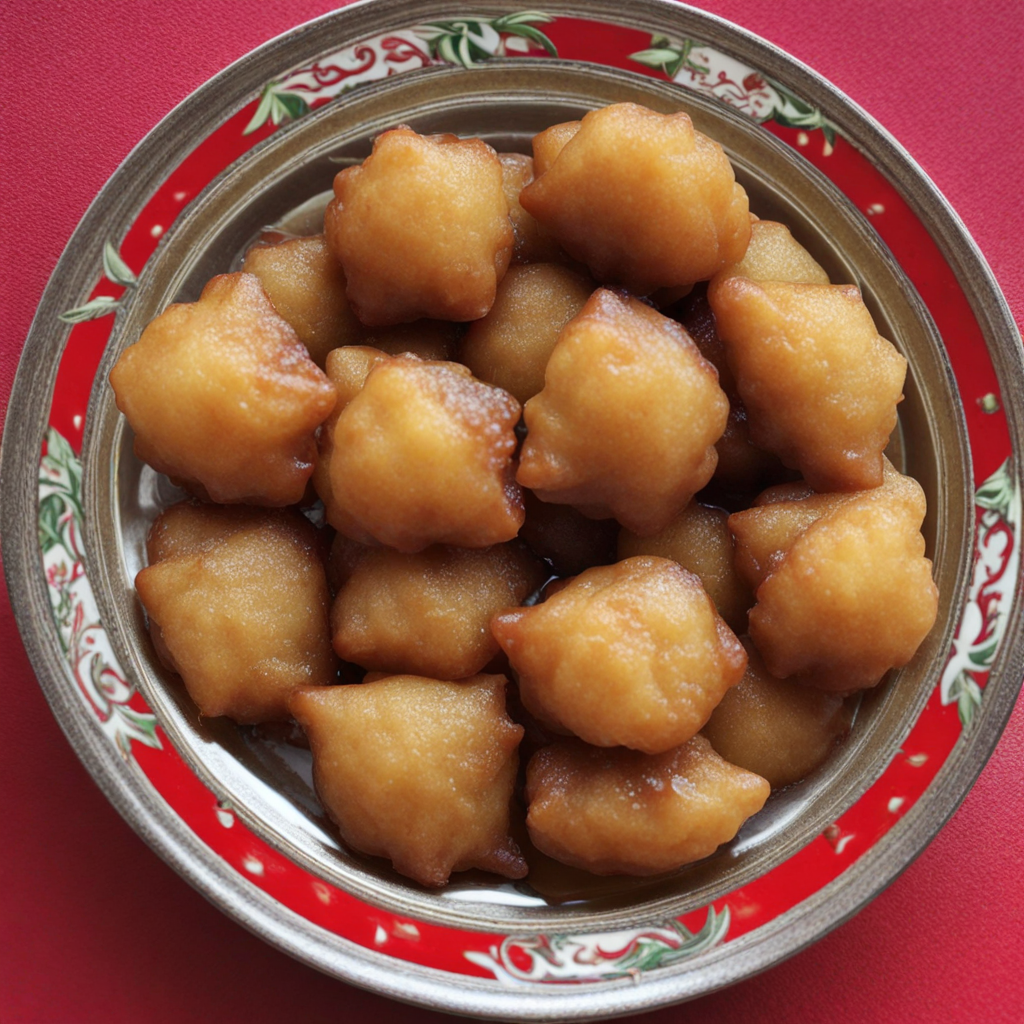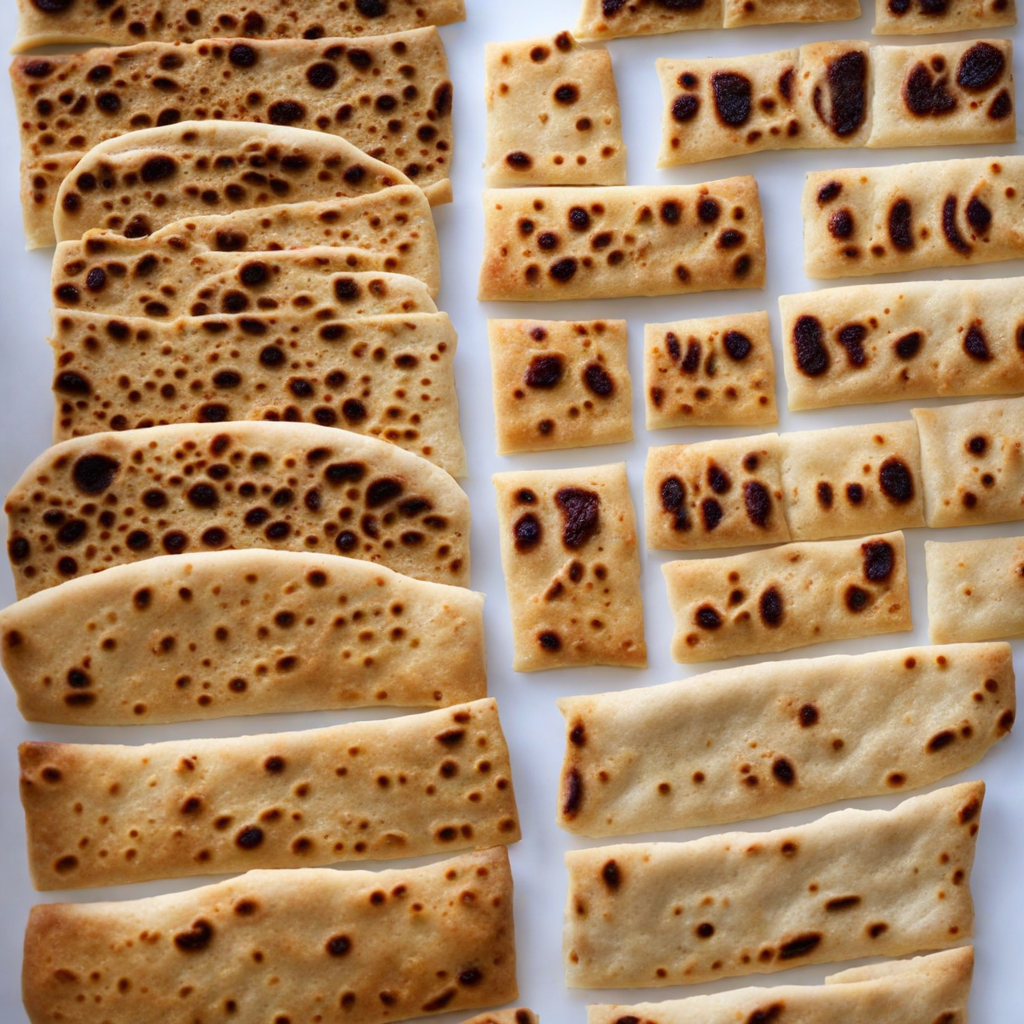Fattoush
Fattoush is a vibrant and refreshing salad that hails from the Middle Eastern culinary tradition, with a particular popularity in Qatar. This dish is a delightful medley of crisp, seasonal vegetables such as tomatoes, cucumbers, radishes, and bell peppers, all finely chopped and tossed together. The standout feature of Fattoush is the inclusion of toasted or fried pieces of pita bread, which add a satisfying crunch and a unique texture that elevates the entire dish. Each bite is a burst of freshness, making it a perfect accompaniment to any meal or a light standalone dish. The dressing of Fattoush is equally enticing, typically made from a blend of pomegranate molasses, olive oil, lemon juice, and a hint of sumac, giving it a tangy and slightly sweet flavor profile. Sumac, a spice made from dried and ground berries, imparts a distinctive tartness that perfectly balances the richness of the olive oil and the freshness of the vegetables. Aromatic herbs like mint and parsley are often added, infusing the salad with a fragrant note that enhances its appeal and makes it a feast for both the eyes and the palate. In Qatar, Fattoush is more than just a salad; it is a symbol of hospitality and communal dining, often enjoyed during gatherings and celebrations. The bright colors and diverse textures of the vegetables, combined with the crunchy pita and zesty dressing, create a dish that is not only delicious but also visually stunning. Whether you're experiencing it at a traditional Qatari feast or trying your hand at making it at home, Fattoush is a wonderful way to explore the fresh flavors of Middle Eastern cuisine and discover a taste that is both familiar and exotic.
How It Became This Dish
The History of Fattoush: A Culinary Journey through Qatar Fattoush, a vibrant and refreshing salad, is a staple of Levantine cuisine, celebrated not only for its delightful combination of flavors and textures but also for its rich cultural significance. While its roots can be traced back to the broader Middle Eastern region, particularly in countries like Lebanon and Syria, its presence and adaptation in Qatar reflect the nation’s culinary evolution and cultural exchanges that have shaped its gastronomic landscape. #### Origins and Etymology Fattoush, derived from the Arabic word "fatt," meaning to break or crumble, refers to the crumbled pieces of flatbread that are a key component of this salad. Traditionally, the dish was a way to use up stale bread, a common practice in many cultures that emphasizes resourcefulness in the kitchen. This frugality is mirrored in many Middle Eastern dishes, where leftover ingredients are transformed into new meals, demonstrating a deep respect for food and minimizing waste. The earliest forms of Fattoush are believed to have originated in the Levant, particularly in the fertile regions of modern-day Lebanon and Syria, where fresh vegetables and herbs flourish. The use of bread in salads is a practice that can be traced back to ancient civilizations, where bread was often a staple food. The introduction of Fattoush into Qatari cuisine likely occurred as a result of the extensive trade routes and cultural exchanges that connected the Arabian Peninsula with the Levant. #### Cultural Significance In Qatar, Fattoush is more than just a dish; it embodies the essence of hospitality and communal dining. It is often served as part of a mezze platter, which includes a variety of small dishes meant to be shared among guests. This practice fosters a sense of togetherness and community, reflecting the Qatari values of generosity and familial bonds. During special occasions and gatherings, such as weddings, festivals, and Ramadan iftar meals, Fattoush is a common fixture on the table. Its bright colors and fresh ingredients symbolize the joy of celebration and the bountifulness of life. The salad's vibrant presentation, made with a medley of vegetables such as tomatoes, cucumbers, radishes, and bell peppers, alongside aromatic herbs like parsley and mint, makes it visually appealing and appetizing. Fattoush also carries a deeper connection to the land, as it highlights the importance of agriculture in Qatari culture. The salad’s reliance on fresh, local produce emphasizes the values of sustainability and seasonality, which are increasingly relevant in today's culinary world. As Qatar has made strides toward food security and local agriculture, Fattoush remains a reminder of the traditional practices that honor the land and its resources. #### Ingredients and Preparation Traditionally, Fattoush includes a variety of fresh vegetables, herbs, and toasted or fried pieces of flatbread, usually made from pita. The salad is typically dressed with a simple vinaigrette made from olive oil, lemon juice, and sumac, a tangy spice that adds a unique depth of flavor. The use of sumac is particularly significant, as it is a common ingredient in Middle Eastern cuisine, often used to provide acidity and brightness to dishes. The preparation of Fattoush is relatively straightforward, yet it allows for creativity and personal touches. Regions and families may have their variations, incorporating seasonal vegetables or unique dressings. Some might add pomegranate seeds for a burst of sweetness or nuts for added texture. This adaptability is part of what has allowed Fattoush to thrive in various culinary contexts, including in Qatar. #### Development Over Time As Qatar has evolved over the centuries, so too has the culinary landscape. The discovery of oil in the mid-20th century transformed the nation, leading to rapid urbanization and an influx of expatriates from around the world. This cultural melting pot introduced new ingredients, flavors, and cooking techniques, enriching Qatari cuisine. Fattoush adapted to these changes, incorporating influences from neighboring countries and the diverse expatriate communities. Restaurants and cafes began to offer their interpretations of the salad, experimenting with different dressings or garnishes. This evolution reflects a broader trend in Qatari cuisine, where traditional dishes are reimagined through modern lenses while still respecting their roots. In recent years, there has been a notable resurgence in interest in traditional foods, driven by a growing awareness of health and wellness. Fattoush, with its emphasis on fresh vegetables and healthy fats from olive oil, aligns perfectly with this trend. It has gained popularity not only in home kitchens but also in fine dining establishments, where chefs celebrate its heritage while presenting it in innovative ways. #### The Role of Fattoush in Contemporary Qatari Cuisine Today, Fattoush is celebrated as a quintessential part of Qatari identity, representing the rich tapestry of influences that have shaped the country’s culinary heritage. It is commonly featured on menus across the nation, from casual eateries to upscale dining experiences. As Qatar prepares for its role on the global stage, particularly with events like the FIFA World Cup in 2022, Fattoush stands as a symbol of the nation’s hospitality and culinary pride. Moreover, the recent focus on sustainability and local food production has breathed new life into Fattoush. With the encouragement of local farming and the emphasis on using seasonal ingredients, the salad has become a canvas for showcasing Qatar’s agricultural efforts. Farmers markets and community-supported agriculture initiatives have begun to flourish, allowing chefs and home cooks alike to access fresh, locally-grown produce for their Fattoush. #### Conclusion Fattoush may have humble origins as a way to use stale bread, but it has evolved into a symbol of Qatari culture, hospitality, and culinary creativity. As a dish that bridges the past and present, it continues to adapt, reflecting the dynamic nature of Qatari cuisine and the cultural exchanges that define it. Whether enjoyed at a family gathering, a festive celebration, or a fine dining experience, Fattoush remains a beloved staple that encapsulates the spirit of Qatar—a testament to the power of food in bringing people together.
You may like
Discover local flavors from Qatar


